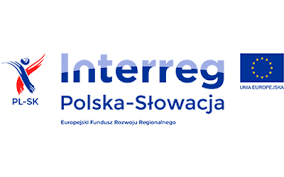Filter Search for grants
Program navigation
Program key data
Interreg Poland-Slovakia

| Parent program | European Regional Development Fund |
| Link to the program | pl.plsk.eu |
Content of program
| short description | The Cooperation programme addresses the most important cross-border challenges which are linked to the implementation of the Europe 2020 strategy in the Polish-Slovak border region. Strategically, the programme will support the development of transport infrastructure to improve cross-border accessibility and provide easier access to TEN-T networks. At the same time, it will address environmental issues and promote effective and sustainable use of natural and cultural heritage. |
| program objectives | The following priorities and specific objectives have been developed within the programme:
read more |
| Expected results | The programme proposes the following (non exhaustive) types of measures: P1: Nature-friendly and safe borderland
P2: Better connected borderland
P3: A borderland that is creative and attractive for tourists
P4: Cooperation of institutions and inhabitants of the borderland
read more |
Eligibility criteria
| Regions / countries for funding | Poland (Polska), Slovakia (Slovensko) |
| eligible entities Partners |
Research Institution incl. University, Public Body (national, regional and local; incl. EGTCs), Education and training institution, Small and medium-sized enterprise (SME), Non-Profit Organisation (NPO) / Non-Governmental Organisation (NGO) |
| Mandatory partnership | Yes |
| Project Partnership | The minimum eligible partnership must involve at least one partner from each participating Country. In order to be eligible, projects must contribute to the four cooperation criteria
|
| other eligibility criteria |
|
Additional information
| Topics | Administration & Governance, Institutional Capacity & Cooperation, Air Quality, Biodiversity & Environment, Climate & Climate Change, Water quality & management, Arts & Culture, Cultural Heritage, Tourism, Digitalisation, Digital Society, ICT, Mobility & Transport, Rural & Urban Development/Planning |
| Relevance for EU Macro-Region | EUSBSR - EU Strategy for the Baltic Sea Region, EUSDR - EU Strategy for the Danube Region |
| UN Sustainable Development Goals (UN-SDGs) |
|
| Program documents | Interreg Poland-Slovakia 2021-2027 Programme (1537kB) |
| Contact | Interreg PL-SK Joint Secretariat kontakt@plsk.eu Website |
Geschlossene Calls
16.09.2024 - 15.11.2024
Call Interreg PL-SK: Biodiversity 2025
01.10.2025 - 28.11.2025
Call Interreg PL-SK: Climate
16.09.2024 - 15.11.2024
Call Interreg PL-SK: Projects for Electromobility
05.06.2023 - 29.09.2023
Call Interreg PL-SK: Projects for Institutional Cooperation
05.06.2023 - 29.09.2023
Call Interreg PL-SK: Projects for Roads
01.08.2023 - 31.10.2023
Call Interreg PL-SK: Tourism and Culture
05.06.2023 - 29.09.2023
Interreg PL-SK: Call Tourism
01.10.2024 - 10.01.2025
Interreg PL-SK: Small projects - Carpathia
16.10.2023 - 12.01.2024
Interreg PL-SK: Small projects - Region Beskidy
24.10.2023 - 12.01.2024
Interreg PL-SK: Small projects - Region Prešov
16.10.2023 - 19.01.2024
Interreg PL-SK: Small projects - big effects under the Tatra Mountains
16.10.2023 - 19.01.2024